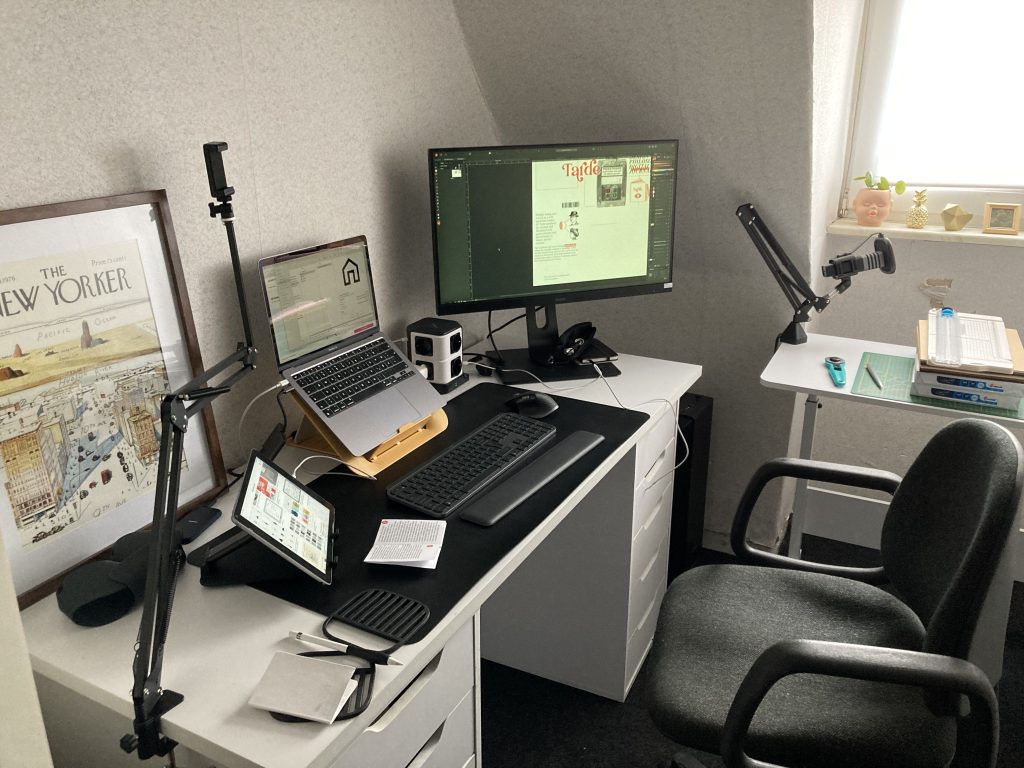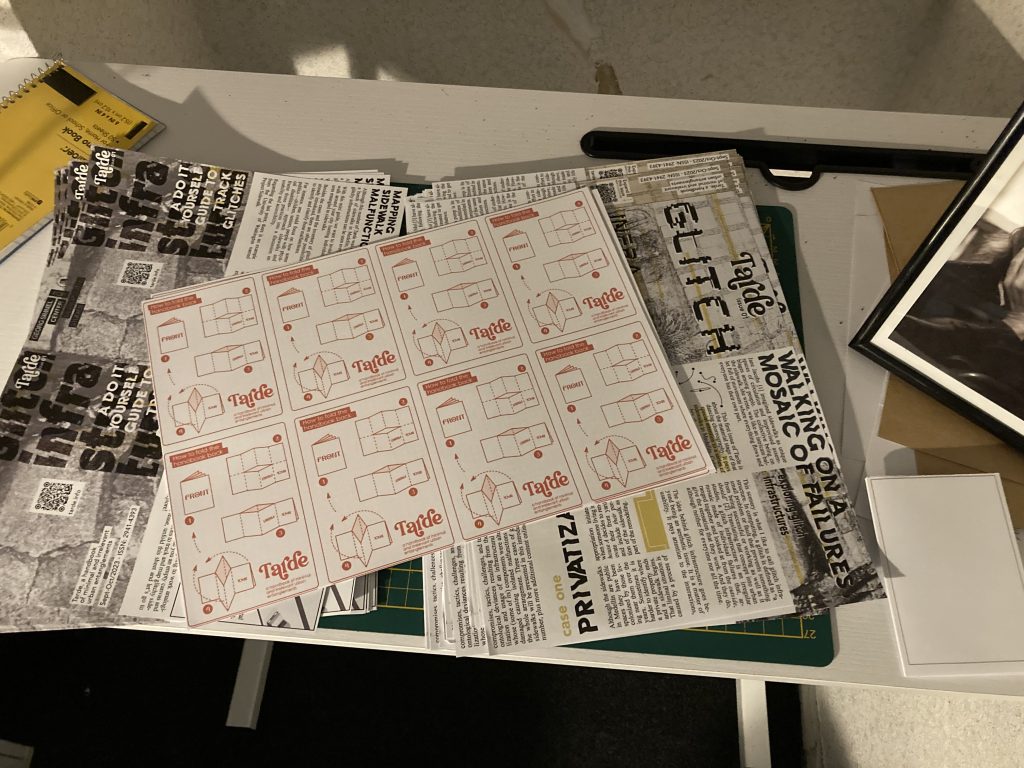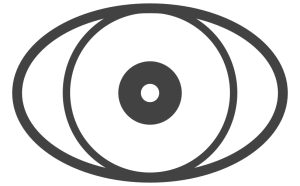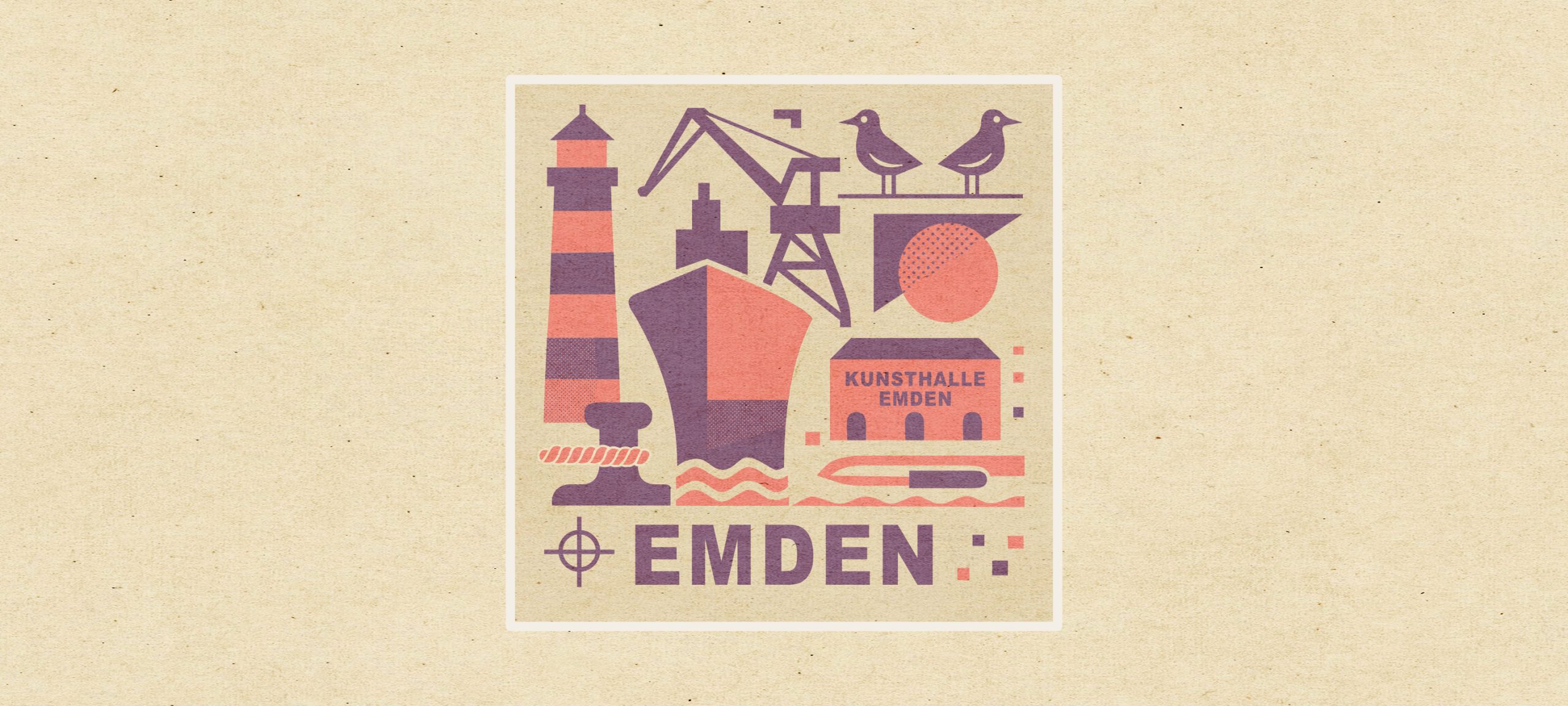From The Atelier Series
Emden, 2023
By 2023, I had moved again—this time to Emden, a small port city in northern Germany. It was there, in a modest office filled with papers, plants, and printed maps, that the Artefaktenatelier began to expand beyond its original form. What started as a conceptual and doctoral experiment was now becoming an ongoing studio practice: a way of living, teaching, and doing ethnography otherwise (Lury & Wakeford 2012; Marcus 2013).

In Emden, I finally had the space and rhythm to work materially—to cut, print, bind, and draw. I was teaching Urban Mapping, experimenting with multimodal assignments, and creating the first issues of Tarde, an ethnographic zine that collected fragments of urban encounters. Each issue was a combination of fieldwork and publication, echoing the experimental spirit that had guided the Artefaktenatelier since its inception in Munich (Schneider & Wright 2010; Ingold 2013).
At the same time, I was developing a new project: Infrastructuring Multispecies Encounters, an ethnographic investigation of Berlin’s petting zoos as urban infrastructures. These sites, where humans and animals share routines of feeding, cleaning, and watching, have become laboratories for thinking about how more-than-human life co-produces urban space (Haraway 2016; Ogden, Hall & Tanita 2013). The project fused my interests in multispecies ethnography, design, and cartography—extending the atelier’s speculative methods into a new ecological domain (Bennett 2010; Keck 2020).
Emden marked a transition from diagramming to infrastructuring. The studio was no longer only about representing the urban but about assembling it—through zines, maps, and collaborative research devices (Star & Ruhleder 1996; Denis & Pontille 2015). I began to imagine the Artefaktenatelier as part of a larger ecosystem: the Ethnographic Atelier, a collective practice for producing multimodal artifacts and epistemological tools grounded in more-than-human ethnography (Gunn, Otto & Smith 2013; Pink 2015).

The projects I was nurturing—Tarde, Materialtone, Multispecies Encounters, and more-than-human cartographies—shared a sensibility toward fragments, textures, and care (Puig de la Bellacasa 2017; Stewart 2007). Each one was a continuation of the same inquiry: how can ethnography be practiced through form, through artifacts that think, invite, and provoke (Myers 2015; Manning & Massumi 2014)? The atelier was becoming not just a methodology but a philosophy of making-with (Ingold 2018; Suchman 2011).
Teaching, printing, and fieldwork converged into a daily rhythm of experimentation. Students mapped sensory patterns of cities, I printed risograph zines in the evenings, and drafts of new projects covered the walls. It was a time of creative abundance—a small ecosystem of ethnographic making that blurred the boundaries between research, pedagogy, and art (Collins, Durington & Gill 2017; Drazin & Küchler 2015).
From Emden, the Artefaktenatelier looked less like a project and more like an infrastructure for thinking—a moving constellation of experiments that continued to evolve. The Ethnographic Atelier now serves as its current manifestation: a transdisciplinary studio for multimodal ethnography, grounded in care, curiosity, and material imagination. It remains unfinished, as all studios should be.
References
- Bennett, Jane. 2010. Vibrant Matter: A Political Ecology of Things. Duke University Press.
- Collins, Samuel, Matthew Durington, and Harjant Gill. 2017. Networked Anthropology: A Primer for Ethnographers. Routledge.
- Denis, Jérôme, and David Pontille. 2015. “Material Ordering and the Care of Things.” Science, Technology, & Human Values 40(3): 338–367.
- Drazin, Adam, and Susanne Küchler. 2015. The Social Life of Materials: Studies in Materials and Society. Bloomsbury.
- Gunn, Wendy, Ton Otto, and Rachel Charlotte Smith, eds. 2013. Design Anthropology: Theory and Practice. Bloomsbury.
- Haraway, Donna J. 2016. Staying with the Trouble: Making Kin in the Chthulucene. Duke University Press.
- Ingold, Tim. 2013. Making: Anthropology, Archaeology, Art and Architecture. Routledge.
- Ingold, Tim. 2018. Anthropology: Why It Matters. Polity Press.
- Keck, Frédéric. 2020. Avian Reservoirs: Virus Hunters and Birdwatchers in Chinese Sentinel Posts. Duke University Press.
- Latour, Bruno. 2008. What Is the Style of Matters of Concern? Amsterdam: Van Gorcum.
- Lury, Celia, and Nina Wakeford, eds. 2012. Inventive Methods: The Happening of the Social. Routledge.
- Manning, Erin, and Brian Massumi. 2014. Thought in the Act: Passages in the Ecology of Experience. University of Minnesota Press.
- Marcus, George E. 2013. “Experimental Forms for the Expression of Norms in the Ethnography of the Contemporary.” Hau: Journal of Ethnographic Theory 3(2): 197–217.
- Myers, Natasha. 2015. Rendering Life Molecular: Models, Modelers, and Excitable Matter. Duke University Press.
- Ogden, Laura, Billy Hall, and Kimiko Tanita. 2013. “Animals, Plants, and People: Extending Entanglements in the Anthropocene.” Environment and Society: Advances in Research 4(1): 35–53.
- Pink, Sarah. 2015. Doing Sensory Ethnography. 2nd ed. Sage.
- Puig de la Bellacasa, María. 2017. Matters of Care: Speculative Ethics in More-Than-Human Worlds. University of Minnesota Press.
- Schneider, Arnd, and Christopher Wright, eds. 2010. Between Art and Anthropology: Contemporary Ethnographic Practice. Berg.
- Star, Susan Leigh, and Karen Ruhleder. 1996. “Steps Toward an Ecology of Infrastructure: Design and Access for Large Information Spaces.” Information Systems Research 7(1): 111–134.
- Stewart, Kathleen. 2007. Ordinary Affects. Duke University Press.
- Suchman, Lucy. 2011. “Anthropological Relocations and the Limits of Design.” Annual Review of Anthropology40: 1–18.

